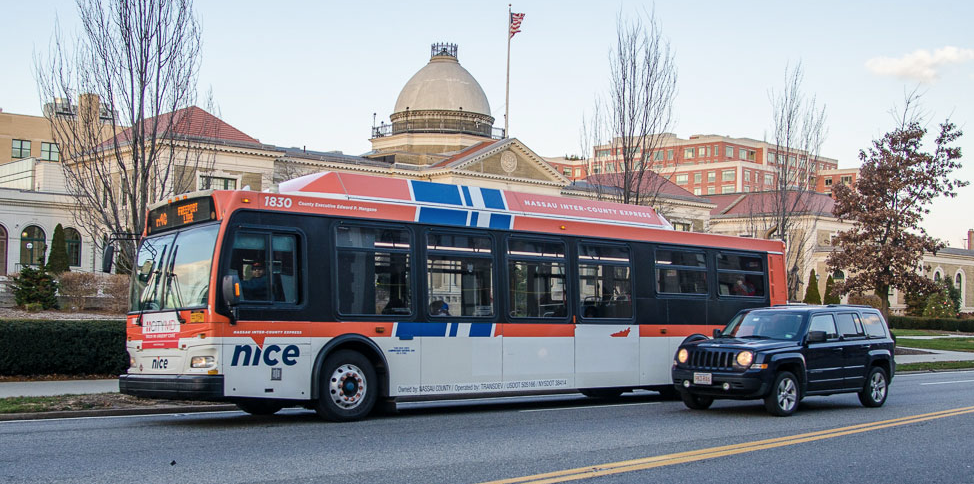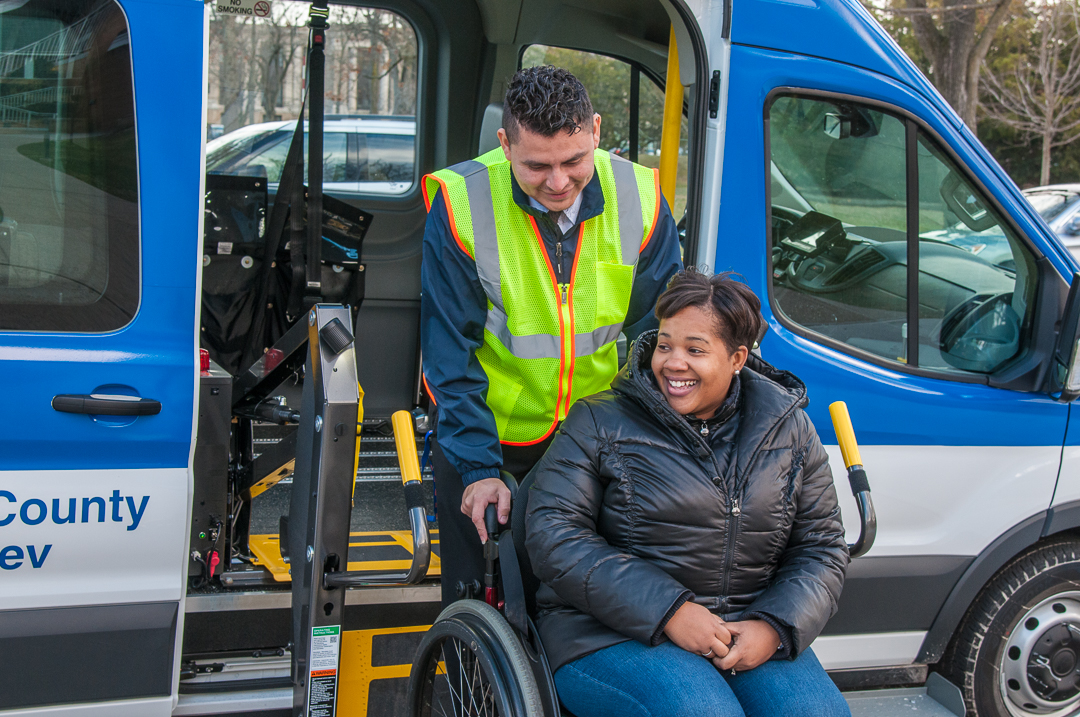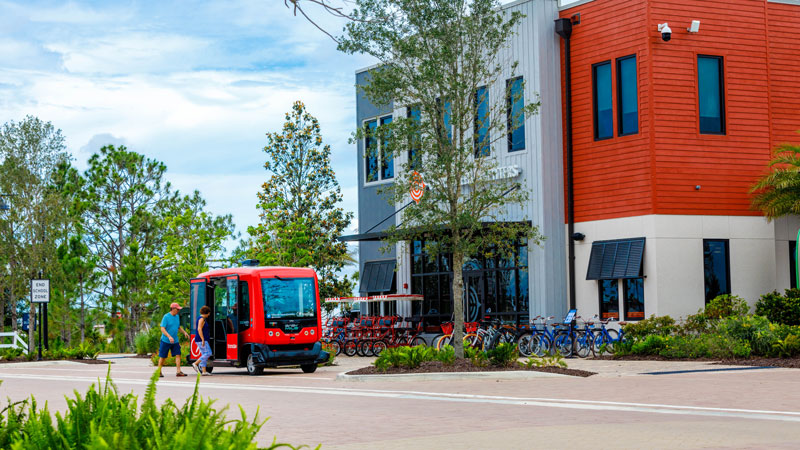The urban mobility revolution happening on streets today is focused on creating more options to serve passengers with greater efficiencies. At the upcoming LA CoMotion Conference, Transdev North America CEO Yann Leriche will present his company’s efforts to advance mobility technology and improved passenger convenience in cities across the country. In advance of his remarks, TPR sat down with Leriche to assess the role of the private sector in both innovation and partnering with public transport agencies to integrate new service models. Formerly Veolia Transportation, the French-based private sector transport operator, operating around the world, is working with LA Metro on its planning efforts for microtransit services, as well as numerous public-private projects in transit operations in Nassau County (in Long Island), New Orleans, Phoenix and other major cities. Leriche, who will participate on a featured panel entitled Providing the Service of Seamless Mobility on November 15 at 5:15 pm, also assesses the state of mobility innovation, autonomous vehicles, and the emerging mobility as a service (MaaS) paradigm.

Yann Leriche
"Our vision of mobility as a service is to develop a bundled service that makes it simple (for a user) to plan, book, and pay for a full trip using different modes." —Yann Leriche, Transdev
As CEO of Transdev, give our readers an overview of Transdev’s global transportation market operations, and some cities and countries where you are presently providing mobility services.
Yann Leriche: Transdev is a global transportation operator and integrator with operations in 20 countries, including the US and Canada. All together, we transport more than 10 million people every day. Our core business is working with public transit agencies to provide the best service possible, but we also work for private companies and offer consumer services.
The two foundations of our work are delivering efficient performance and improving the customer experience. We operate transit in Nassau County, in Long Island, for example. They had a lot of overcrowded routes, so we helped them go from scheduled routes to a frequency-based service called “Headway Management.” We are also the operator in New Orleans, and an active partner in the strategic mobility plan to reshape the entire transport system of the city and the region. We operate paratransit services in Phoenix, where one of our key projects is to improve the customer experience to be more seamless and convenient.
Transdev works to be at the forefront of what’s available, and we innovate a lot. For example, we have developed tools to assess the customer experience. One of them, T.ex, is a way of rigorously mapping the full journey of our passengers to understand where the experience is good and where there are opportunities to improve, and then to develop the right action plans to implement improvements.

As a market leader in transportation innovation and customer service, Transdev touts its multimodal mobility digital services (MaaS). What does MaaS mean, and how does Transdev implement it in the markets you serve?
Mobility as a Service (MaaS) is the idea of providing digital access to a wide range of transportation options. Today, there’s typically a separate app—if there is one—for each type of transportation we might want to use: one for public transit, one for ride-hailing, one for bike-sharing, etc. It’s quite complicated to see how to get from A to B using multiple modes. The vision of MaaS is to develop a bundled service that makes it simple to plan, book, and pay for a full trip using different modes.
We are one of the leaders in this area, and we are expanding quite fast. Our wholly owned subsidiary, Cityway, consists of 200 people working just in this field. We’ve developed a region-wide MaaS platform for the city of Toronto called Triplinx. In Mulhouse, France, we recently launched Compte Mobilité, (Mobility Account) a mobility subscription that people can use to access public transport, taxis, bikes, and parking. At the end of the month, passengers receive a single invoice optimized based for what they used during the month.
We regularly issue a global survey to our clients around the world, especially in the public sector, asking about their priorities for transportation. A few years ago, Mobility as a Service was not at all a priority. Today, 75 percent of transit agencies in the US are interested in developing Mobility as a Service in the coming months and years.
Elaborate on your current public-private contracts with transit agencies to take on fleet maintenance, paratransit or microtransit operations.
The best case is when the agency defines what they want to achieve, and lets us propose how to achieve it. The more freedom we have, the more innovation we can introduce.
Because of how fast technology is moving, we believe that the more open-ended a contract is, the better. It’s important for us to have contracts that offer the flexibility to adjust in order to make improvements. If we were to sign a five-year contract, for example, we would want to be able to say after two years that our original plan is no longer the most efficient option because of new technology, and to propose a new plan that is better and cheaper.

What does a city need to bring to the table in order to craft a service arrangement that works for Transdev?
It’s key that cities are precise about the objectives they want to achieve in their community.
Transdev is one of the leaders in public transportation, and we’ve seen that the transit systems that best meet their goals are the ones where those goals have clearly been expressed by the transit agency. One goal of public transport is mass transit: to transport as many people as possible in dense areas where it’s most efficient, like downtowns of large cities where space is scarce and there are a lot of people.
But another goal of public transport is social transit. In some areas—usually outer suburbs—access to jobs is complicated without a car, and many low-income people don’t have one. In these cases, the goal of public transport is not to move large numbers of people, but to provide a smaller group of people with an affordable mode of motorized transportation so that they can go to work.
These are really different goals that require different strategies. That’s why it’s not enough for an agency to ask us to provide “transportation.” Should the available resources be directed into creating the best routes and dedicated lanes in the city center, or into reaching outer suburbs to serve low income people and improve their access to regional job centers? To really provide good service, and help our clients achieve their goals, we need a clear understanding of what a specific city, county, or community wants to achieve.
Los Angeles recently unveiled a strategic implementation plan called Urban Mobility in the Digital Age, with the goal of creating a “sandbox” for innovation. Is this a procurement approach that aligns with Transdev’s approach to global service?
My opinion is that the sandbox procurement model used in Los Angeles today will become the standard in many other places in the months and years to come.
We are working with LA Metro on a microtransit feasibility pilot. They understand that technology is moving quite fast, and are transforming their procurement practices and how they work with the private sector. They understand that public-private partnerships can be of value, and that contract that is too rigid can’t fully unleash the power and potential of new products and technologies.
Los Angeles, like other North American metropolitan areas, is seeing a decline in bus ridership. LA Metro is undertaking a multi-year NextGen Bus Study to reconfigure its bus network for the 21st century. What advice could you offer LA Metro, and how reliant on bus services should transit agencies be?
I don’t know about NextGen specifically, but this speaks to one of the main differences between Europe and the U.S.—two places where we are very active and where I worked myself.
In the U.S., the type of contract we operate usually focuses around one or sometimes two modes of transport. In Europe, for years now, the approach has been different. Our proposals are almost always multimodal, focused on well-integrated modes with smooth well-coordinated transfers, and we usually partner with other companies to make an proposed plan that is both broad and deep.
Buses are just one part of the answer for how best to serve a community. In most cities, having frequent and reliable service on main corridors to efficiently move large numbers of people just makes sense. However, in less dense areas or outside of peak hours, it may be better to offer car-sharing or ride-hailing services. We are much more involved in integrated service design and coordination on the other side of the Atlantic, but there’s a chance that things will move that way here in the future.

Brief our readers on Transdev’s global autonomous vehicle projects, and the lessons you are learning from them.
We have many autonomous vehicle projects, including in Florida, Australia, and many places in Europe. These initiatives are focused on understanding and developing the services of the future. Our goal is to understand what autonomous vehicle technology can provide and what opportunities it will offer.
We’ve learned a lot. For example, several global surveys have concluded that initially people are not excited about riding in autonomous vehicles. But each time we survey riders about their experience in our autonomous shuttles—we find that people like to be in them. Our conclusion is that people who have never tried this kind of service have doubts at the beginning, but as soon as they enter a shuttle, they start to like it. That’s quite interesting because it proves that there is potential.
At the same time, when you remove the bus driver from the equation, a lot of questions arise that aren’t only about driving. Bus drivers do much more than drive; they ensure the security and safety of the system, and they ensure that people pay their fares. We are working on ways to ensure that people pay fare when there’s no driver, but a fair solution is not as obvious as it might appear.
Lastly, what are the current positions of local, state, and federal regulatory agencies about AV safety and data privacy?
There are several discussions underway with the authorities. The first is about reaching the necessary level of safety while continuing to innovate enough to make progress.
One of the big questions before us is at what point we will be able to put fully driverless vehicles on the street. Specifically, how much safer should driverless vehicles be than human drivers before they are authorized to transport people? This is a very important question that must be addressed.
Another question is that of data. Autonomous cars are going to collect a lot of data about everyone and everywhere on the street—much more than surveillance cameras do today. There are questions about who will own that data, what we can be done with it, and how to ensure people’s privacy.
It’s a broad question because there are so many different types of data. The position of a vehicle is one type of data, and it’s different than what a camera records in its surroundings. The first one shows where a person is. But a video recording shows much more about who is there. And in the first case, riders could consent to show where they are in relation to other vehicles. But when you get into video recordings of surroundings, you impact people who are not even using the service—say, people walking on a street where there happens to be an AV driving.
These are global societal questions, and it can’t only be corporations that address them. There are obviously many participants who need to be involved in the realm of setting policy. There’s a huge amount of work to do to determine what’s acceptable or not acceptable, and what will be the consequences of various approaches. I believe the answers will also vary by country, or maybe even by city, because approaches to privacy are different from one place to the next.
- Log in to post comments



